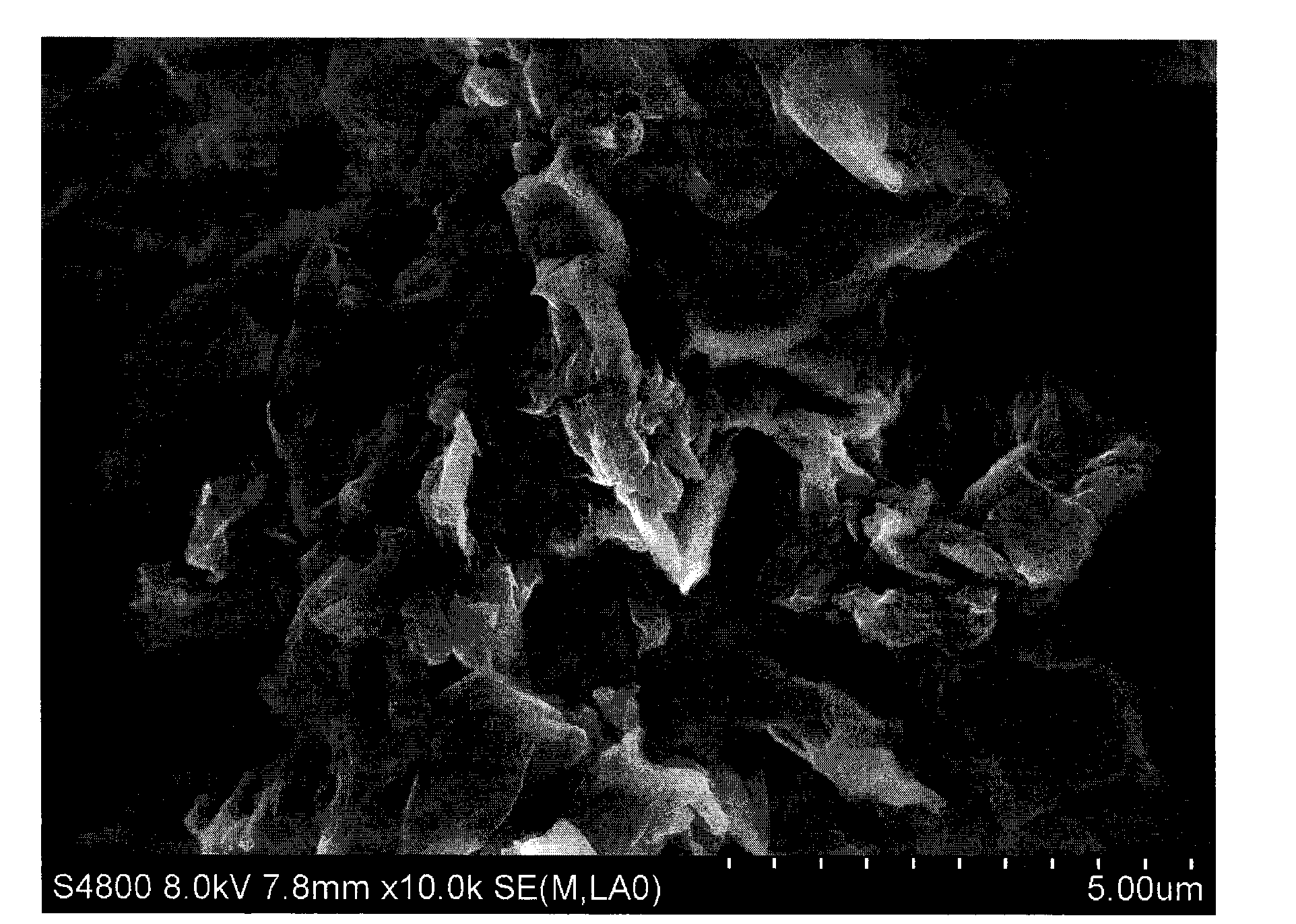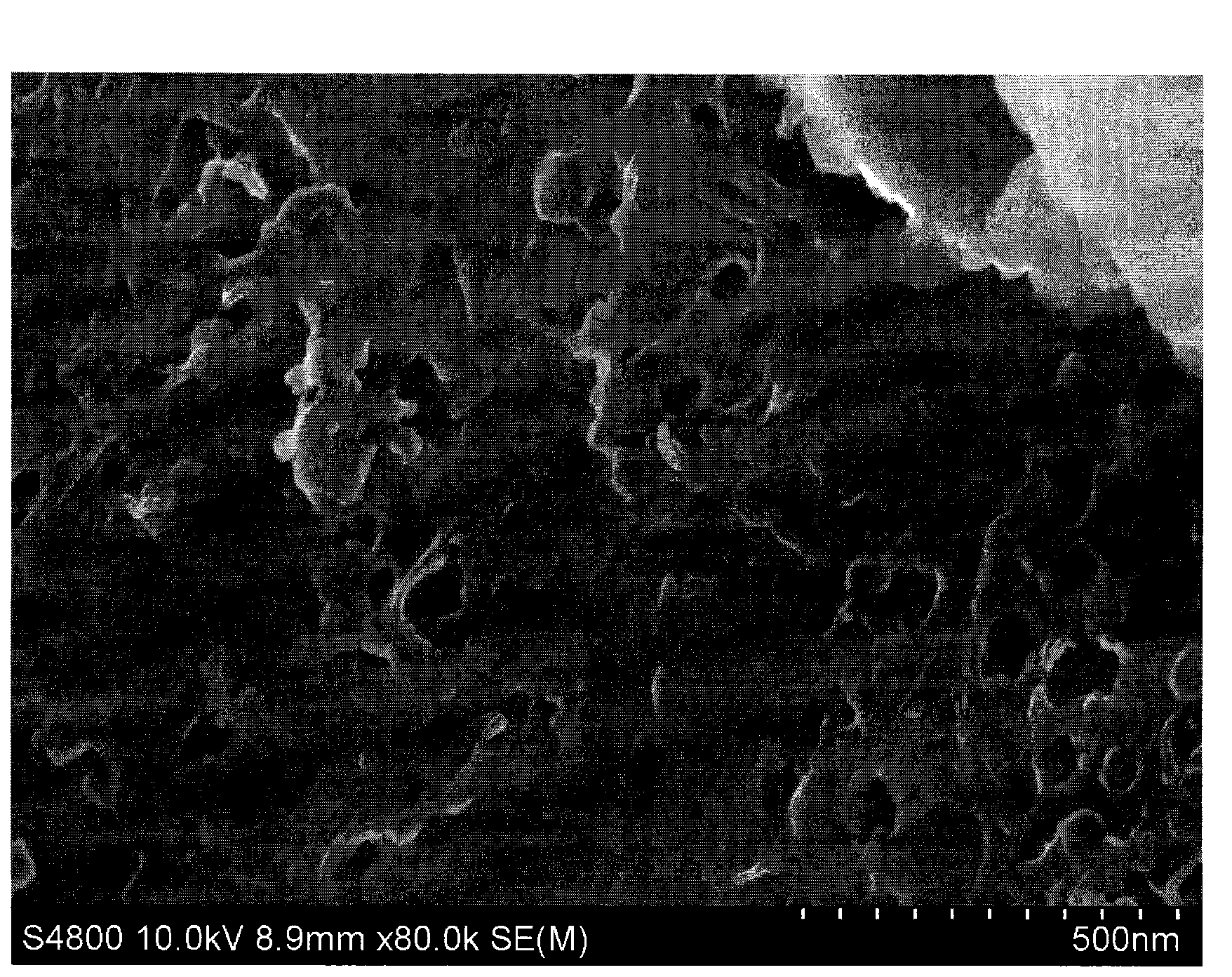Iodine-doped carbon material serving as cathode of dye-sensitized solar cell
A solar cell and dye sensitization technology, applied in the field of iodine-doped carbon materials, can solve the problems of lower battery performance, potential loss, complex process, etc., and achieve the effects of low cost, good stability, and simple process
- Summary
- Abstract
- Description
- Claims
- Application Information
AI Technical Summary
Problems solved by technology
Method used
Image
Examples
preparation example Construction
[0033] 1) The preparation methods of these iodine-doped carbon materials are simple and can be prepared by different methods.
[0034] 2) The iodine-doped graphitized carbon prepared by high-temperature sintering of graphene oxide not only preserves the layered structure of graphitized carbon, but also has a large specific surface and good electrical conductivity and catalytic activity, and can prepare high-efficiency low cost battery. The iodine-doped carbon material prepared from non-graphitizable carbon has improved its catalytic activity due to the introduction of iodine element, and the efficiency of the prepared battery has also been greatly improved.
[0035] 3) The iodine-doped carbon material prepared by the present invention can be mixed with carbon black in different proportions as the cathode material of the dye-sensitized solar cell, so that the conductivity of the cathode material can be adjusted by adjusting the proportion of iodine element in the cathode and a...
Embodiment 1
[0037] Example 1: Dye-sensitized solar cell prepared with iodine-doped graphite sheet as cathode
[0038] Sinter 200mg of graphite oxide flakes and 1g of elemental iodine in a tube furnace at 900°C for 3 hours under a nitrogen atmosphere, and then place them in an oven at 70°C for 48 hours to allow the remaining elemental iodine to volatilize completely. The measured iodine atoms The content is 3.43%. Iodine-doped graphene was then coated onto conductive glass as a cathode, using TO with adsorbed dye molecules 2 It is the anode of the battery, and the dye molecule is N719.
[0039] figure 1 It is the scanning electron micrograph of the iodine-doped graphene prepared in embodiment 1. The obtained I-V curve is as Figure 4 As shown, the photoelectric conversion efficiency reaches 2.95%, while the photoelectric conversion efficiency of undoped graphene is only 0.06%, and the photoelectric conversion efficiency of the platinum electrode as the cathode is 4.6% under the same co...
Embodiment 2
[0040] Embodiment 2: Prepare iodine-doped graphene with solution reaction
[0041] Elemental iodine is dissolved in ethanol, graphene oxide is dispersed in water, the two are mixed and reacted at 50-100°C for 24 hours, then centrifuged and washed with a large amount of ethanol, and dried in an oven at 50°C.
[0042] figure 2 It is the scanning electron micrograph of the iodine-doped graphene prepared in embodiment 2.
PUM
 Login to View More
Login to View More Abstract
Description
Claims
Application Information
 Login to View More
Login to View More - R&D
- Intellectual Property
- Life Sciences
- Materials
- Tech Scout
- Unparalleled Data Quality
- Higher Quality Content
- 60% Fewer Hallucinations
Browse by: Latest US Patents, China's latest patents, Technical Efficacy Thesaurus, Application Domain, Technology Topic, Popular Technical Reports.
© 2025 PatSnap. All rights reserved.Legal|Privacy policy|Modern Slavery Act Transparency Statement|Sitemap|About US| Contact US: help@patsnap.com



